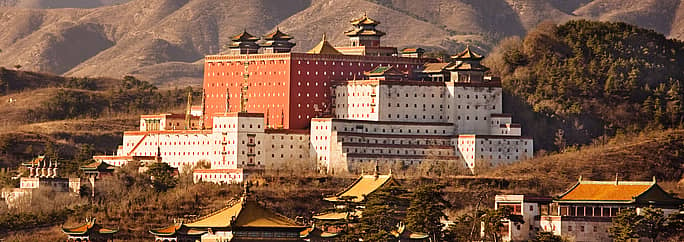
Chengde (China)
Practical information on Chengde
Reviews of Chengde
The city of Chengde, formerly known as Rehe or Jehol, is located a little over 200 km northeast of Beijing, in Hebei Province.
Chengde, which is like a breath of fresh air after visiting the Chinese capital, is a particularly cultural and historical destination to visit.
It was in these verdant hills that the Kangxi Emperor decided to build his summer residence in 1703. In the 18th century, therefore, Chengde became the summer residence of the Qing dynasty emperors and the entire imperial court. Today, the mountain residence and neighboring temples – the largest palace-gardens-temples complex in China – are inscribed as UNESCO World Heritage. The site is particularly famous for its architecture, which incorporates elements of Han, Mongol and Tibetan art and culture.
To better absorb the particular atmosphere of the place, a stay of two nights is recommended.

The city of Chengde, formerly known as Rehe or Jehol, is located a little over 200 km northeast of Beijing, in Hebei Province.
Chengde, which is like a breath of fresh air after visiting the Chinese capital, is a particularly cultural and historical destination to visit.
It was in these verdant hills that the Kangxi Emperor decided to build his summer residence in 1703. In the 18th century, therefore, Chengde became the summer residence of the Qing dynasty emperors and the entire imperial court. Today, the mountain residence and neighboring temples – the largest palace-gardens-temples complex in China – are inscribed as UNESCO World Heritage. The site is particularly famous for its architecture, which incorporates elements of Han, Mongol and Tibetan art and culture.
To better absorb the particular atmosphere of the place, a stay of two nights is recommended.






